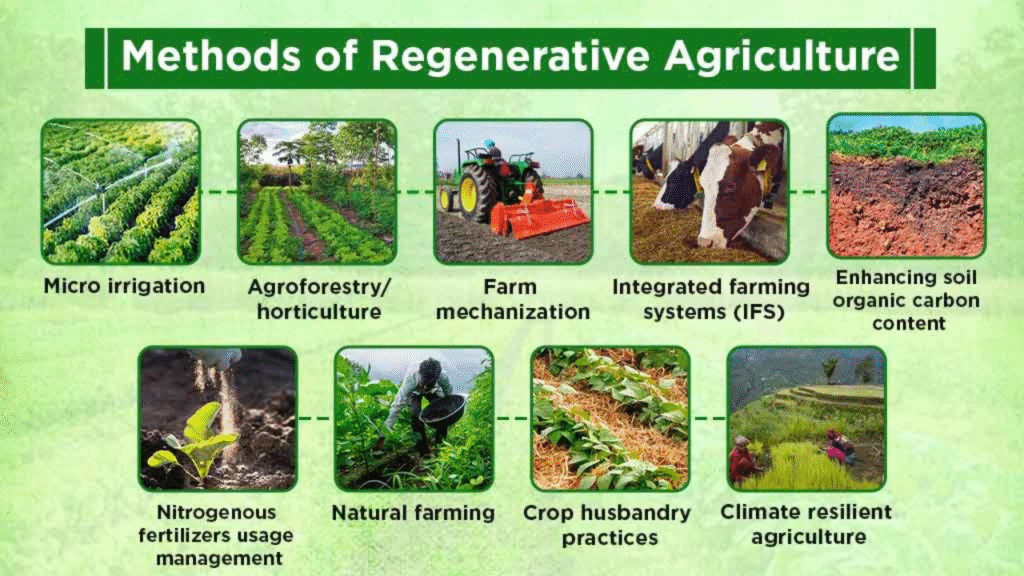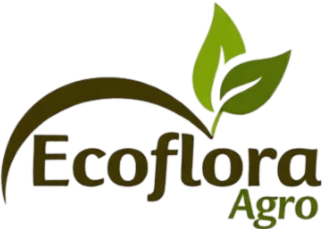
As conventional agriculture faces rising criticism for degrading soils, depleting biodiversity, and accelerating climate change, a new solution is rising fast: Regenerative Agriculture. More than just a buzzword, it represents a transformative approach that goes beyond sustainability to actively restore soil, ecosystems, and farming communities.
At its heart, regenerative agriculture focuses on soil health—the foundation of every farming system. By leveraging natural processes and minimizing disruption, this approach enhances soil fertility, boosts resilience, and locks carbon back into the earth.
This article explores the principles of regenerative agriculture, practical techniques for soil health, real-world examples, and why it’s quickly becoming the new standard for future farming.
What Is Regenerative Agriculture?
Regenerative agriculture is a holistic land management system that improves soil biology, water retention, and biodiversity while enhancing crop yields and farmer resilience. Unlike conventional or even sustainable agriculture, which may aim to “do no harm,” regenerative agriculture aims to heal and revive degraded ecosystems.
Core Goals:
- Increase soil organic matter (SOM)
- Enhance microbial and fungal activity
- Improve nutrient cycling and water holding capacity
- Reduce chemical dependency
- Sequester atmospheric carbon in the soil
Key Principles of Regenerative Soil Management
| Principle | Description |
|---|---|
| Minimal Soil Disturbance | Avoiding tillage to preserve microbial ecosystems and reduce erosion |
| Diverse Cover Cropping | Planting multiple species to protect and enrich soil year-round |
| Living Roots Year-Round | Keeping plants growing to feed soil life and improve carbon retention |
| Integrated Livestock | Using rotational grazing to recycle nutrients and stimulate growth |
| Compost and Organic Inputs | Feeding the soil with biologically rich materials to replace synthetics |
Soil Health Benefits from Regenerative Practices
| Soil Parameter | Impact of Regenerative Agriculture |
|---|---|
| Organic Matter (%) | Increased by 20–100% over a few years |
| Water Infiltration Rate | Improves significantly, reducing runoff and drought stress |
| Microbial Biomass | Increases due to improved habitat and root exudates |
| Carbon Sequestration | Captures 1–3 tons of CO₂ per hectare annually |
| Erosion Loss | Reduced by up to 90% with cover cropping and no-till |
Key Techniques in Regenerative Soil Health Management
1. No-Till or Conservation Tillage
Reduces mechanical soil disturbance, protecting fungal networks and preserving soil aggregates.
2. Multispecies Cover Cropping
A mix of legumes, grasses, and flowering plants helps fix nitrogen, break pest cycles, and keep the soil covered.
3. Biological Amendments
Application of compost, compost tea, worm castings, or microbial inoculants revitalizes microbial life and improves nutrient availability.
4. Agroforestry and Perennials
Intercropping trees or shrubs with annual crops builds deep root systems, enhances biodiversity, and improves water cycling.
5. Adaptive Grazing
Livestock are moved regularly to prevent overgrazing and mimic natural herd behavior, improving plant regrowth and soil aeration.
Real-World Success Stories
| Region | Practice Applied | Outcome |
|---|---|---|
| India – Rajasthan | Cover cropping + compost use | 2x increase in wheat yields, improved moisture retention |
| USA – Iowa | No-till + multispecies cover | Soil organic matter rose from 2% to 5% in 5 years |
| Kenya – Regenerative grazing | Adaptive livestock rotation | Improved pasture quality, reduced desertification |
| Brazil – Agroforestry | Intercropped fruit trees + legumes | Boosted soil nitrogen and year-round income |
| Colombia – Coffee systems | Compost + shade trees | Reduced erosion, enhanced flavor profile and bean resilience |
Environmental and Economic Benefits
| Impact Area | Benefits Delivered |
|---|---|
| Soil Fertility | Better nutrient retention, less need for synthetic fertilizers |
| Water Management | Higher infiltration, lower irrigation demand |
| Biodiversity | Habitat for pollinators, earthworms, fungi, and beneficial insects |
| Climate Resilience | Stable yields under drought or heavy rain |
| Farm Profitability | Lower input costs and premium market access for regenerative crops |
Overview Table: Regenerative Agriculture’s Soil Health Impact
| Focus Area | Description |
|---|---|
| Soil Structure | Builds aggregation and aeration through root systems and minimal tillage |
| Soil Life | Promotes microbial, fungal, and insect biodiversity |
| Organic Inputs | Replaces chemical fertilizers with compost, biochar, and teas |
| Carbon Capture | Stores atmospheric carbon belowground via living plants and roots |
| Farmer Economics | Reduces input dependency and improves resilience to market volatility |
| Land Restoration | Reclaims degraded or abandoned farmlands for productive use |
The Role of Technology in Supporting Regenerative Soil Health
- AI & Sensors: Monitor moisture, microbial activity, and root zone dynamics.
- Drones: Assess soil cover, plant health, and erosion zones in real-time.
- Data Platforms: Help farmers track changes in soil health and carbon levels over time.
- Blockchain: Assures transparency in regenerative product claims for consumers and buyers.
Three One-Line FAQs
Q: Can regenerative practices replace chemical fertilizers completely?
Yes, over time, regenerative methods can reduce or eliminate the need for synthetics.
Q: How long does it take to see soil improvements?
Many farms see measurable gains in soil health within 2–3 years of consistent practices.
Q: Are regenerative farms more profitable?
Often yes, due to reduced input costs and access to premium, sustainability-focused markets.

